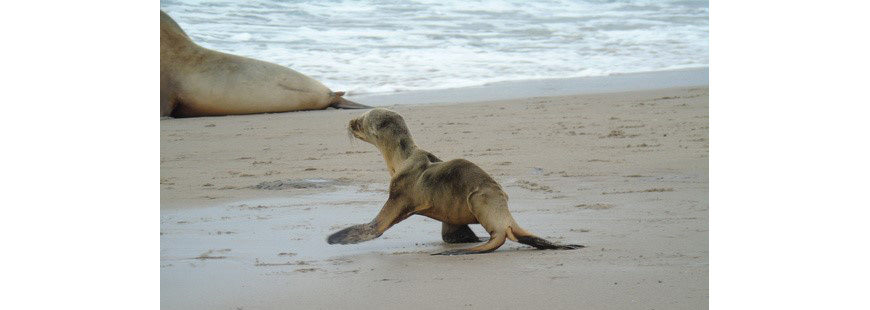Top Photo: A warm water “blob” in 2014 forced sea lion mothers to forage further from their rookeries in the Channel Islands off Southern California. Hungry pups set out on their own, but many became stranded on area beaches. Photo and caption via NOAA Fisheries.
Last year our oceans absorbed 93 percent of the heat our carbon emissions trapped in the atmosphere. The ocean would never release all this retained heat at once, but if the heat stored in the world’s oceans since 1955 was instantly transferred, NOAA relates the atmosphere would warm by 65 degrees F.
The Gulf of Maine is warming faster than 90 percent of all the global oceans. This year, even though we had cooler temperatures, we were still above normal in the Gulf of Maine.
Vincent Saba, a top climatologist and research fishery biologist from NOAA’s Northeast Fisheries Science Center, said, “We believe that the Gulf Stream has shifted north and the Labrador Current (a cold current in the North Atlantic Ocean that flows south along the coast of Labrador) is receding north. This in part is why the Gulf of Maine is so warm.”
Dr. Andrew Pershing, chief scientific officer for the Gulf of Maine Research Institute, said in a September 19, 2019 article, “July 2019 was the warmest July ever recorded in the Northeast and over much of the planet.”
Rhode Island a top warming state
In an August 13, 2019 Washington Post article “2°C: BEYOND THE LIMIT…Extreme climate change has arrived in America,” Rhode Island is noted as the first state in the lower 48 whose average temperature rise has eclipsed 2 degrees Centigrade (or 3.6 degrees Fahrenheit). Alaska is actually the fastest warming state.
The Washington Post said, “In the past century, the Earth has warmed 1.8 degrees Fahrenheit. But that’s just an average. Some parts of the globe — including the mountains of Romania and the steppes of Mongolia — have registered increases twice as large.”
Warm “blob” on the West Coast
In September 2019, NOAA Fisheries reported on a new marine heat wave emerging on the West Coast that resembles a warm water “blob” that visited the coast in 2014. In some places the water is five degrees warmer than normal.
During the last “blob,” warmer conditions left lesser-quality food available to young salmon entering the ocean. It also shifted predator distributions in ways that contributed to low returns of salmon. NOAA Fisheries said on its website that other impacts included:
- The largest harmful algal bloom recorded on the West Coast, which shut down crabbing and clamming for months;
- Thousands of young California sea lions stranded on beaches; and
- Multiple declared fishery disasters.
Next steps for climate change science
Dr. Hare, NOAA’s Northeast Science Center Director, said, “I was happy to hear states are using our climate change research to influence policy making. The focus of the Northeast Science Center moving forward is to help the people that make the fisheries decisions and the people impacted by them (the fishermen). This is out of my comfort zone but this is where we are headed.”
Vincent Saba, NOAA’s top climate scientists said, “We are now looking at more than warming water. Acidification as well as sea level rise is part of climate change impacts too. For example, ocean acidification has impacted the lobster and scallop fisheries in our region.”
The Lenfest Ocean Program is a grant-making program that identifies, supports and communicates marine science that concerns threats to the world’s oceans. Each year they award about $3 million for climate, ecosystem and wildlife research.
From October 21 to 23, 2019 Lenfest will conduct its “Lenfest Idea Lab” with the goal of identifying the type of climate change research needed moving forward. The idea is to help fishermen and fishery managers understand how to work with climate change.
Thirty of the nation’s top climate scientists and fishing industry leaders will help Lenfest frame criteria for future Lenfest Ocean Program climate change research projects.
Charlotte Hudson, director of the Lenfest Ocean Program said, “Our goal is to identify what information gaps are there and put science into hands of fishermen and fishery managers for use. Moving forward we need to look at warming water, rising water and acidification… the total changes that are occurring in water chemistry. For example, today ocean acidification has a major impact on the aquaculture industry on the West Coast.”
Scientists are doing what they can to help all of us who rely on ocean resources navigate the new and changing waters of climate change. In a follow up post, I’ll further explore how fishermen and fishery managers are dealing with the impacts of warmer waters and other impacts of climate change.


